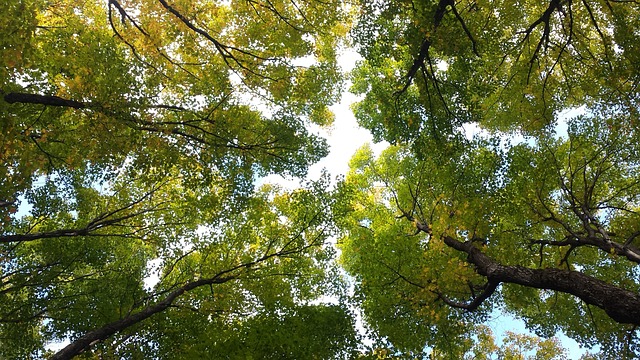By Bill Cook
Forest ownership encompasses a small minority of Michigan citizens. Let’s be upfront about this. Less than two percent of the human population owns 10 acres or more. However, this accounts for about 40 percent of the forest area, or about eight million acres. That’s a lot of forest owned by a few. The rest of the forest is owned by a mix of governments, corporations, and a short list of other private groups.
In Michigan, three-quarters of the “family forest” was purchased, with most of the remainder inherited. According to the National Woodland Owner Survey, a U.S. Forest Service research tool, the big reasons to own forestland are wildlife, scenery, hunting, and privacy.
So, if you’re looking to buy forestland, or sell it, what sort of forest conditions will be meet these most common ownership goals? Well, a lot of this is subjective, based on how a forested parcel looks and where it is located.
Most of Michigan’s forestland is “up north”, although there are some very fine parcels scattered across southern Michigan. Prices range from under $1,000 per acre to several thousand dollars per acre, depending much upon the geographical location. Property tax rates vary quite a bit as well.
A common Michigan practice is to “slick-off” a forty before putting it on the market as “hunting property”. In some cases, this just might be the ticket for many folks, especially those interested in deer and game birds. However, this practice might not be the first choice for trees, habitat, and other values. It will be decades before that property begins to reclaim the appearance of forest with larger trees, which has a visual appeal to many.
Finding a forest parcel that comes with a more mature forest is less common, but it provides the new owner with many more management options than the slicked-off forty. Many, if not most, of these parcels are sold via world-of-mouth.
A standing forest can be variously thinned, regenerated, managed for larger trees, and higher timber values. Stand density can be altered to achieve different understory and habitat objectives. The more you have to begin with, the more that you can play.
Often not considered is the place in the landscape. The values of a wooded forty in a wooded landscape will be quite different than a wooded forty surrounded by soybean fields. What forest types are in the vicinity, as well as other vegetation, such as swamps, rivers lakes, and marshes? Many wildlife species have home ranges larger than 40 acres, so landscape conditions heavily impact wildlife, especially game species.
A red pine stand amidst an ocean of northern hardwoods will be more ecologically valuable than a red pine stand in thousands of acres of other red pine.
What sort of species mix might there be? Aspen is short-lived. Sugar maple is long-lived. Oaks might be under threat of oak wilt. A balsam fir understory does not bode well for some wildlife, but will be a boon to others. Do the hardwoods have a conifer component? Do the conifers have a hardwood component?
How accessible is the parcel? Is it along a Class A highway, or at the end of a half-mile two-track that crosses other ownerships?
And what about the soil types? Does the current forest match the soils and landforms? If not, how much of a challenge would it be to convert the forest to more appropriate tree species?
In some cases, a severely high-graded forest (the best trees taken and the rest left behind) might be best clearcut then re-started from scratch. This can be a lot fun, especially if you’re young and have access to some forestry expertise.
If you’re in the market, buying or selling, consider matching the forest conditions with a specific audience. Properly marketing the forest might be a terrific bargaining chip in selling land. If you’re buying, then looking at many properties is a good idea and the process might take months or years to find just the right one.
If you’re buying, and get what you’re looking for, what then?
You may have already enlisted the services of a forester to help decide upon a land purchase. That forester might be the one to help write a management plan and discuss various property tax and cost-share programs. What do you want that forest to look like in a decade? Two decades? Three? What is the capability of the land and forest?
Forest ownership can be a long-term adventure, especially with the help of a professional forester.







